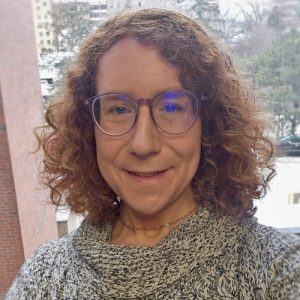- This event has passed.
RNA Innovation Seminar: Lydia Freddolino, Ph.D., Associate Professor of Biological Chemistry, Computational Medicine and Bioinformatics, U-M Medical School
Monday, May 19 @ 4:00 pm - 5:00 pm
 “Transcriptional control by heterochromatin-like regions is a conserved feature across the bacterial kingdom”
“Transcriptional control by heterochromatin-like regions is a conserved feature across the bacterial kingdom”
Lydia Freddolino, Ph.D.
In-person: Kahn Auditorium, BSRB | Hybrid link
Abstract:
Despite decades of dogma indicating that bacterial chromosomes are universally accessible to transcription, more recent evidence has emerged indicating that bacteria in fact contain densely protein occupied, transcriptionally silent regions in their genomes. We have observed such silent regions across every bacterial species so far tested using appropriate methods, despite substantial differences in the molecular implementation in each case. Furthermore, these regions can be partitioned roughly into constitutive and condition-dependent regions of silencing, drawing clear functional analogies to constitutive vs. facultative heterochromatin in eukaryotes. I will present an overview of recent findings on the molecular architecture and functional roles played by bacterial heterochromatin-like regions, along with an outlook of how these regions may interact with epigenetic phenomena and evolution.
Biography:
Lydia Freddolino obtained her B.S. with Honors in Biology at the California Institute of Technology, followed by Ph.D. work in the laboratory of Prof. Klaus Schulten at the University of Illinois at Urbana-Champaign, focusing on large-scale molecular dynamics simulations of protein folding and assembly. She then pivoted to pursue postdoctoral training in bacterial systems biology under the guidance of Prof. Saeed Tavazoie, first at Princeton University and later at Columbia University. Since joining the faculty at the University of Michigan in 2015, Lydia has built her research program around two main pillars, one centered on the transcriptional regulatory roles of bacterial chromatin, and one focused on developing and applying new computational methods for predicting protein structure and function.
Links:
Freddolino Lab

